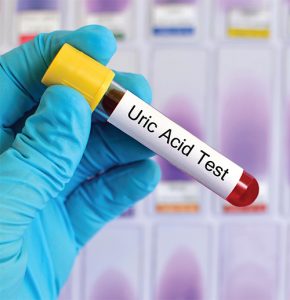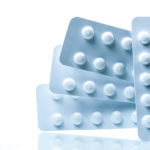
Jarun Ontakrai/shutterstock.com
LONDON—From optimizing responses to methotrexate, to the efficacy of biologics, to the need for imaging in assessing remission, the literature, as ever, has been lively with explorations of pressing topics in the treatment and management of rheumatoid arthritis.
Josef Smolen, MD, chair of rheumatology at the Medical University of Vienna, reviewed many of the highlights from the RA literature over the past year in a presentation at the Annual Congress of the European League Against Rheumatism (EULAR 2016).
Some of his main points:
Optimize Methotrexate Response in RA
Previous studies suggested that the optimal dose is 25 mg per week, but that wasn’t the aim in many recent clinical trials, with some capping doses at 20 mg per week. But some recent trials have reinforced the advantages of trying to reach 25 mg a week.
The C-EARLY trial on certolizumab pegol, for example, found that patients in the methotrexate and placebo arm achieved remission rates of 25% or more, depending on the remission measurement used.1
Efficacy of Biologics
It’s becoming clear that biologics in combination with methotrexate all have similar efficacy.
Comparing data from a series of trials—AIM, GO-FORWARD, OPTION and DANCER—similar responses were seen for abatacept, golimumab, tocilizumab and rituximab in patients with insufficient response to methotrexate. Each of those drugs combined with methotrexate produced an ACR70 response rate in about 20% of those patients.
The randomized, controlled trials of AMPLE (comparing abatacept with adalimumab) and ORBIT (comparing rituximab with anti-TNF therapy) and unpublished data released in a press release for EXXELERATE (comparing certolizumab pegol with adalimumab) validate the similarity in efficacy “beyond any doubt,” Dr. Smolen said.
The Role of JAK Inhibitors
Recent trials, Dr. Smolen said, have seemed to bolster the safety profile of this class of drugs, with long-term extensions of tofacitinib showing an acceptable safety profile similar to the initial periods.
Encouragingly, he said, data for baricitinib in patients who did not respond sufficiently to biologics show similar efficacy no matter the type of biologic agent used, suggesting that the drug can be used effectively across a broad patient population.
And, in RA-BEAM, baricitinib was the first drug to show superiority over a TNF inhibitor in combination with methotrexate.2
Ultrasound
Recent evidence suggests that it’s not necessary to define remission with imaging. The 2016 TaSER trial found no clinical or imaging outcome differences between a group treated with a clinically driven approach and those treated with an ultrasound-driven approach.3
But those treated with the imaging approach were treated with three times the amount of biologics than the other group.
“There is no clinical, functional or structural advantage of targeting imaging remission compared with clinical remission—or even low disease activity,” Dr. Smolen said, “but it results in overtreatment.”
DECT & Ultrasound in Gout
Alexander So, MD, head of rheumatology at the University of Lausanne in Switzerland, in a review of recent gout literature, said recent findings have offered new insights into diagnosis, illustrated the need for greater patient education, and underscored the continued value of traditional treatments.
Scoring systems have been developed for diagnosing gout using dual-energy CT (DECT).4 And DECT has been shown to be able to detect asymptomatic deposits in patients who have hyperuricemia in the setting of chronic renal disease.
“I think this is going to be an emerging technique [that] is going to be used more and more,” Dr. So said. The drawback is that this is very “machine dependent,” so the assessments are reliant on a single machine’s data, and it is still costly and not widely available.
Ultrasound has proved highly specific for a gout diagnosis, but only moderately sensitive, according to recent studies.5
A study from earlier this year found that the optimal dose of allopurinol is determined by body weight & the use of diuretics, which runs contrary to current guidelines.
Patient Education
A recent study suggests that patient education is an ongoing reason why gout, a curable disease, goes uncured so often, Dr. So said.6
A study out of the United Kingdom found that adherence to prescribed treatment is poor, that the number of patients in that country who are receiving urate-lowering therapy (ULT) has not increased although the disease prevalence has increased and that targets are not being reached among those who are on ULT.7
Traditional treatment: Recent studies have suggested that optimal use of older treatments, such as allopurinol, is probably the best option for gout patients.
A study from earlier this year found that the optimal dose of allopurinol is determined by body weight and the use of diuretics, which runs contrary to current guidelines.8
“If you are taking diuretics and you have poor renal function, you are likely to need very high doses of allopurinol,” Dr. So said. The study conveys “how important adjusting the dose is in the individual patient.”
A recent six-month study of allopurinol safety outcomes—the LASSO study—found the drug was well tolerated, with rash in just 1.5% of patients. With the HLA-B*58:01 gene associated with allopurinol hypersensitivity syndrome, researchers are now studying cost-effectiveness of genotyping for this gene.9
A trial comparing the effects on pain of indomethacin to prednisolone found that they were equally effective, but prednisolone has fewer gastrointestinal side effects.10
“We are, at the moment, still in the phase where we don’t have a huge number of new drugs for the treatment of gout, so we are (compelled) to use our old drugs better.”
Thomas R. Collins is a freelance medical writer based in Florida.
References
- Emery P, Bingham CO 3rd, Arendt C, et al. Certolizumab pegol in combination with dose-optimised methotrexate in DMARD-naive patients with early, active rheumatoid arthritis with poor prognostic factors: 1-year results from C-EARLY, a randomised, double-blind, placebo-controlled phase III study. Ann Rheum Dis. 2016 May 10 (Epub ahead of print)
- Genovese M, Kremer J, Zamani O, et al. Baricitinib in patients with refractory rheumatoid arthritis. N Engl J Med. 2016; 374:1243–1252.
- Dale J, Stirling A, Zhang R, et al. Targeting ultrasound remission in early rheumatoid arthritis: The results of the TaSER study, a randomised clinical trial. Ann Rheum Dis. 2016 Jun;75(6):1043–1050.
- Bayat S, Aati O, Rech J, et al. Development of a dual-energy computed tomography scoring system for measurement of urate deposition in gout. Arthritis Care Res (Hoboken). 2016 Jun;68(6):769–775.
- Zufferey P, Valcoy R, Fabreguet I, et al. A prospective evaluation of ultrasound as a diagnostic tool in acute microcrystalline arthritis. Arthritis Res Ther. 2015 Jul 22;17:188.
- Doherty M, Jansen TL, Nuki G, et al. Gout: Why is this curable disease so seldom cured? Ann Rheum Dis. 2012 Nov;71(11):1765–1770.
- Kuo CF, Grainge MJ, Mallen C, et al. Rising burden of gout in the UK but continuing suboptimal management: A nationwide population study. Ann Rheum Dis. 2015 Apr;74(4):661–667.
- Becker MA, Fitz-Patrick D, Choi HK, et al. An open-label, 6-month study of allopurinol safety in gout: The LASSO study. Semin Arthritis Rheum. 2015 Oct;45(2):174–183.
- Wright DF, Duffull SB, Merriman TR, et al. Predicting allopurinol response in patients with gout. Br J Clin Pharmacol. 2016 Feb;81(2):277–289.
- Rainer TH, Cheng CH, Janssens HJ, et al. Oral prednisolone in the treatment of acute gout: A pragmatic, multicenter, double-blind, randomized trial. Ann Intern Med. 2016 Apr 5;164(7):464–471.


